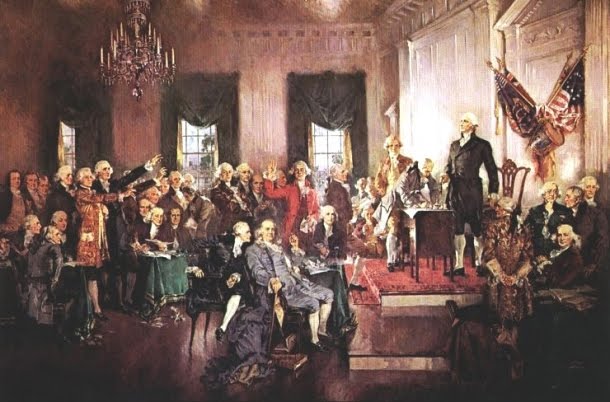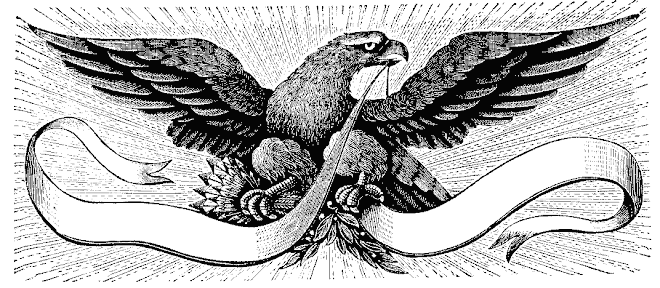From Mises.org:
The Twofold Roots of the Great Depression: Inflationism and Intervention
Mises Daily: Friday, October 01, 2010 by Lionel Robbins
[From The Burden of Plenty (1935), edited By Graham Hutton.]
I want to start by saying something about the phrase "poverty in plenty" of which we hear so much. I cannot help thinking that it may be misleading to some readers. The object of this series is to explain why the economic machine sometimes produces so much less than it could produce, in spite of the fact that so many people consume so much less than they could consume.
To make this vivid it has been thought proper to describe this as a problem of poverty in the midst of plenty. And when we think of the characteristic symptoms of a slump in trade — the granaries full of corn that remains unsold, the factories closed, and the great ships lying idle — when we think of these, the title seems apt enough.
But all the same if it leads you to suppose that if the slump were over and the machines once more running at a normal pace, the problem of poverty would be solved, it will foster a very grave delusion. I know that it is often said that the technical advances of recent years have solved the problem of production — that the age of scarcity is past and that all we have to do is to organize the distribution of plenty.
Unfortunately this is not a view that bears examination. The best statistics point in the other direction. There is no reason to suppose that in the days before the slump, the capacity of industry as a whole to turn out an increased volume of production was very great. Here and there the slack may have been conspicuous. But in the mass it was not so. And this means that the problem of production was not solved and that the age of scarcity was not past.
If you took the aggregate production of the world before the slump, increased it by, say, 20 percent, which is probably far and away beyond what was practicable[1] — and divided it equally among the adult inhabitants of the world — if you did this, I do not suppose that there is anyone in this country who would not be poorer. For you must remember that even the low-paid workers in this country enjoy an income probably considerably above the average of Europe as a whole, and certainly much greater than the average of those great poverty-stricken areas where the bulk of the world's population is situated — Russia, China, India.
So that when we talk of poverty in the midst of plenty we should always remember that we mean relative plenty. Absolutely, the maximum utilization of the world's productive equipment would still leave us, on the average, very badly off.
But why is it that we do not attain even this wretched standard? Why is it that, when the needs of consumption are so great, our capacity to produce is not fully utilized? That is the problem we have to discuss in this book.
Now there are some people who think that the trouble is due to the absence of centralized control of production. In the absence of central control the responsibility for organizing production rests with private enterprise, guided by anticipations of markets — both the markets for the things it sells and the markets for the raw materials, and the services of capital and labor that it buys. There are some who think that such a system is bound to lead to perpetual dislocation and chaos. They say, indeed, that our present difficulties are the result of the breakdown of free enterprise.
But the more you look into the matter, either historically or theoretically, the less plausible this view becomes. Historically, as I shall be arguing later, there are all sorts of explanations that are more plausible than this — there are all sorts of better explanations of the slump. Theoretically, too, the argument fails to carry conviction. Production guided by the market is production organized to satisfy market demand. If mistakes are made, it is the people who make the mistakes who suffer first and suffer most heavily. The market mechanism, if left to itself, compels the necessary adjustment. Surely there is nothing in all this that is conducive to dislocation. Someone must organize production. There must be some means of measuring what consumers want, and how far it can be satisfied — some guide to the relative desirability of producing sugar beets or bicycles.
After all the talk that we have heard in recent years about planning, it is now becoming perfectly clear that if planned production is to be successful it must find some means of reproducing just this play of market forces that arises spontaneously under free enterprise. There are many features of our modern economic organization that are indeed open to grave criticism. But the guidance of production by competitive markets and computations of profit and loss is not one of them. It is an indispensable feature of any successful organization of production.
But if this is so, if there is nothing in the market and competitive production as such, which should lead us to expect a periodic tendency to slump and widespread depression, where then are we to look? How are we to explain the widespread and persistent maladjustments that actually do take place?
The way I have put the problem should suggest the clue we are looking for. The fact that the maladjustments are widespread suggests that they spring from some factors operating in more than one market. But what is it that is common to different markets — to the markets for coal and for houses, for rubber and for pig iron? Not the commodities supplied, surely, but that which is given in exchange for them — that is to say, money. And that I believe is one half of the solution to our problem.
The maladjustments between demand and supply that appear in a slump are the product of errors — on the part of producers — fostered by misleading fluctuations of demand expressed in terms of money. In detail this theory is very complex, and it would require a very long time for me to make plain to you the various ways in which modern economists have explained it. But in broad outline it is really very simple.
If for some reason there is more money than usual available and business conditions look favorable, it is surely not difficult to see that investors and business men may be led to make mistakes — to launch out new undertakings that can only be carried on satisfactorily if these easy-money conditions are going to last. And if they do not last — and you can see that once people have been seized with the speculative mania it would take a continuously increasing inflation to keep them going — if these conditions do not last, then these mistakes are revealed. The lines of industry concerned with launching new enterprise — the so-called heavy industries and the industries producing raw materials — experience a falling off of demand. For the time being business is stagnant; there is unemployment and unused capacity.
That, I say, is the first half of the explanation. A slump, such as you often had during the years before the war, is the result of the mistakes brought about by the boom that preceded it. Till things are straightened out, there is dislocation and slack business.
Now suppose that on top of a depression of this kind there come political troubles — international tension, internal revolution. Suppose that governments, instead of realizing that at such times it is their business to secure the maximum freedom of markets, begin to block up the channels of trade with all sorts of obstructions and petty limitations. Suppose, too, that because of financial catastrophe or the fear of unbalanced budgets people do not know from day to day what is going to happen to their money, and that in their dealings with foreign parties they are hampered by fluctuations of the exchanges. Will not all these be additional causes of depression — influences tending to make people refrain still further from active investment, tending to make them leave their money lying idle at the banks, or even invested for greater safety in gold coins or gold bars? And if this takes place is it not clear that there will be new disparities between demand and supply, a new shrinkage of markets, and renewed deflation?
But what is all this but a description in abstract terms of the dismal history of our own times? As I see things, the trouble really started soon after the slump of 1921–1922, when the gold that had flowed to America began to generate there a great expansion of credit. This expansion gradually spread to other parts of the world, particularly to Germany and the raw-material-producing countries. (In its later stages it was distorted and made more damaging in its effects by the monetary muddles that had been caused by our return to the gold standard at too high a parity.)
1925–1929 were boom years outside of Great Britain. Production went ahead by leaps and bounds and international investments revived on a large scale. And, under the stimulus of the easy-money conditions and the reckless spirit bred by the extraordinary gains that were being made, all sorts of hopelessly bad investments took place. Then costs began to rise. It became harder and harder to borrow. In 1929 the bubble burst, the boom was at an end, and all the mistakes and maladjustments to which it had given rise stood revealed.
So far I have relied on the first half of my explanation. The slump was the aftermath of the collapse of a boom like so many slumps in the past. It had its peculiarities no doubt, but the main features were not dissimilar. But unlike the slumps of the past it has been an abnormally long time disappearing, and its devastation has been more widespread than anything known to history. That is where the second half of my explanation comes in. The slump took place in conditions peculiarly conducive to the propagation and multiplication of shocks. Political conditions were bad for business confidence. The structure of business in the postwar period has been much less flexible than the structure of prewar times — often as a direct result of government support and intervention. International finance was complicated by the existence of a vast system of government borrowing and debts.
"If planned production is to be successful it must find some means of reproducing just this play of market forces that arises spontaneously under free enterprise."The result of all this was that the depression deepened into a colossal financial crisis. In 1931 the international monetary system broke in pieces — easing the position for some, making it much worse for others, and adding to all the other uncertainties of business the terrible uncertainty of exchange instability. Is it to be wondered at that investment has hung fire, that money has been idle, and that in industry generally there has been unused capacity and unemployment?[2]
On top of all this there can be no doubt, to my mind, that the policies pursued by governments have enormously intensified these difficulties. I am glad to see that the various speakers who have addressed you already have nearly all emphasized the fact that policies that restrict supply and limit trade are not conducive to long-run prosperity. On that point apparently we are all agreed. Only the special interests that benefit by restriction maintain the contrary. But I want to go beyond that. I want to urge that these policies are not only bad for long-run prosperity but that they are also bad so far as the prospects of immediate revival are concerned. I want to urge that it is limitations of this sort that deprive the system of free enterprise of its recuperative powers and give rise to the delusion that it is the system itself that is defective.
Look for a moment at the effects of such interventions. Take, for example, what has happened so often just recently, intervention in commodity markets to prevent a fall of prices.
For some reason or other the state of the market for wheat or some similar commodity is such as to threaten a considerable fall. The government becomes alarmed and comes into the market as a buyer. The fall of prices is averted. No doubt from the point of view of the consumer this seems irrational enough. But from the point of view of business stability, at first sight there seems much to be said for the procedure. A collapse has been averted, a shock to confidence warded off.
But is this really the end of the matter? Surely not. The government has only averted the collapse by holding stocks off the market. But what is it to do with them? They are still there. The people in the market begin to become apprehensive. Clearly while the stocks are still there, there is a new uncertainty in the market. Prices sag under this influence. Business refuses to revive. In all probability when the government does get rid of them the collapse of the market is even worse than it would have been had it never intervened. And in the meantime the depression has been prolonged. The conspicuous case of this kind of intervention of course has been the operations of the US Federal Farm Board. But it has happened elsewhere, not once but many times during the last few years.
Take another case — the effect of quota restriction on imports, orders prohibiting the import of more than a certain amount of some commodity from abroad, wherever that is. Clearly the consumer suffers — he has to pay more. Clearly some producers protected by the quota make higher profits. These things are obvious, but think for a moment of the producer whose produce is excluded. He has capital locked up in his business. Suddenly he finds that his market is curtailed. What can he do? Throw the surplus on to other markets at a price lower than before, and try to save something from the wreckage? But this causes further disturbance. New restrictions are erected elsewhere. And so the vicious circle goes on.
Or think again of the effect of those regulations that in most countries of the world today are being imposed to prevent road vehicles carrying people any cheaper than the railways. What do these mean? Clearly that people get less of what they prefer — rides in charabancs and so on — and have to pay more for them, and that the railway returns are higher. But also — and this is the point — that capital that would have been invested developing the motor industry has to look elsewhere, presumably for a lower return.
This case is typical of a very marked tendency nowadays. In earlier slumps one of the factors making for recovery has been the discovery of new channels for active investment. But in this slump it seems to be the policy of governments to impose all sorts of limitations on new investment — apparently on the ground that they may lower the return on some capital that is already invested. But that way lies complete stagnation. Think of what would have happened in the 19th century if the people who had capital invested in the roads, the turnpike trusts and the owners of stage coaches, had been able to prevent the development of the railways save in those directions where no turnpike trusts were menaced. Is it to be believed that recovery from the various slumps that occurred would have been so rapid or material progress so considerable?
$25 $15
No doubt a little of this sort of thing does comparatively little damage. For the greater part of modern history protective tariffs have made the world poorer than it would have been otherwise, without choking trade altogether. But when it is multiplied indefinitely — when on all sides you see the multiplication of restrictions on trade and investment — the erection of state-aided monopolies, and the limitation of free enterprise — then I submit you do not need to ask further why the phenomenon of poverty in the midst of plenty persists, or why, on any clear view of the future, it is likely to continue to persist.
But notice, and this brings me to the point from which I started, it is not the system of private enterprise and free markets that is responsible for this phenomenon. It is the suspension of that system. It is not capitalism but interventionism and monetary uncertainty that are responsible for the persistence of the slump.
Robbins was one of the leading English economists of the 20th century. He wrote on wages, inflation, the economics of war, and the history of economic thought. See Lionel Robbins's article archives.
This article is excerpted from The Burden of Plenty (1935), edited By Graham Hutton.
A READER ON THE STATE OF THE POLITICAL DECAY AND IDEOLOGICAL GRIDLOCK BETWEEN ONE GROUP WHO SEEK TO DESTROY THE COUNTRY, AND THOSE WHO WANT TO RESTORE IT.
The Rise and Fall of Hope and Change




Alexis de Toqueville
The American Republic will endure until the day Congress discovers that it can bribe the public with the public's money.
Alexis de Tocqueville
Alexis de Tocqueville
The United States Capitol Building

The Constitutional Convention

The Continental Congress

George Washington at Valley Forge



Subscribe to:
Post Comments (Atom)
No comments:
Post a Comment